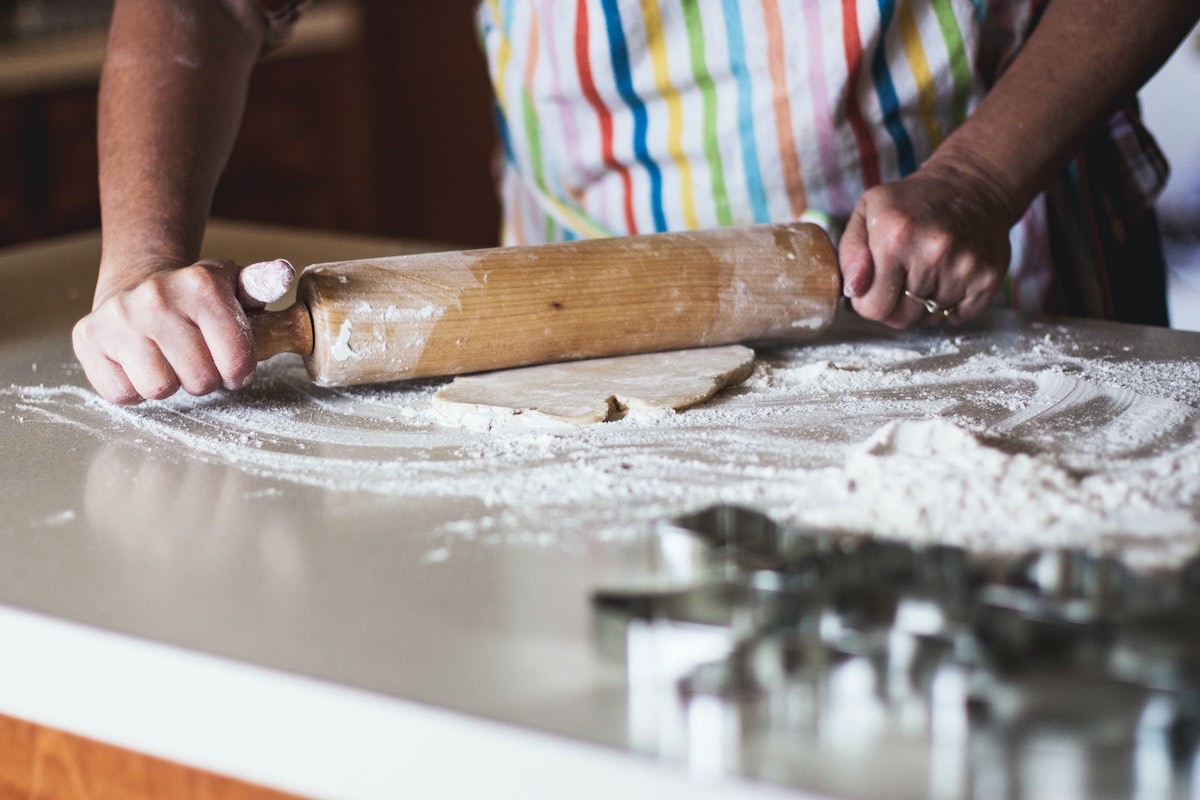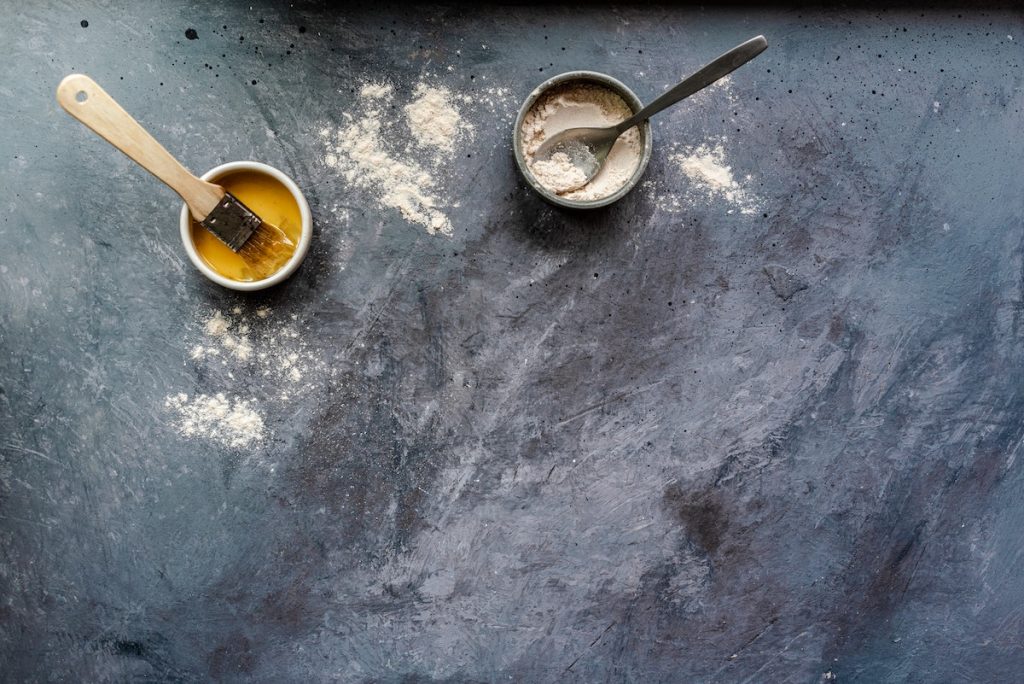Flour is a common staple in any kitchen pantry. It’s a crucial ingredient for almost any dish or pastry you can think of. But did you know that there’s no such thing as “just one type of flour?”
You may be familiar with the different flour varieties: all-purpose, cake, bread and wheat. But flour can also be categorized into two types: bleached vs. unbleached flour.
Most people prefer one or the other; others have no clue on the difference between bleached and unbleached flour. A majority of people are even unsure of what sets the two flour types apart. After all, don’t they look the same?
You can use bleached and unbleached flour interchangeably in recipes. But it begs the question: is one healthier than the other? Is unbleached flour better for losing weight? Which flour is better for baked goods?
Bleached vs. Unbleached Flour: What Are Their Differences?
Technically, all flours are bleached but what sets unbleached vs. bleached flour apart is three factors: the processing, nutrient profiles and characteristics.
Processing
One of the primary differences between bleached and unbleached flour is the processing.
Unbleached flour includes any type of flour that may or may not be refined. On the other hand, bleached flour goes through a refining process that removes the nutrient-rich germ and bran of the wheat kernel. The refining process also strips the grain of its minerals and vitamins.
Both bleached and unbleached flour is then milled, a process that involves grinding the grains into fine powder.
After the milling process, both flours enter different third steps. Once milled, unbleached flour are left to age naturally. The natural aging process takes longer compared to the bleaching process. On the other hand, bleached flour is treated with chemicals like chlorine, potassium bromated or benzoyl peroxide to speed up its aging process. Flour must be aged to improve the quality of your dish.
Both flour types go through an enriching process where the manufacturer adds certain nutrients back to the flour.
Nutrition Facts
In terms of nutrient profiles, bleached and unbleached flour are similar. Both flour types contain the same amount of calories, as well as carbohydrates, fat, protein and fiber, per cup. However, the bleaching process can decrease the flour’s vitamin E content. But unbleached flour only has a small amount of vitamin E anyway — only two percent of the daily recommended value.
But unrefined and whole-wheat types may have more nutrients compared to their bleached counterparts. For instance, whole-wheat flour has more fiber, copper, manganese and vitamin E. Both unbleached and bleached flours are enriched with B-vitamins like thiamine, niacin, folate and vitamin B6.
Characteristics
The bleaching process causes changes in the texture, appearance and taste of flour. The chemicals used in the process result in whiter and finer grains that are softer in texture. On the other hand, unbleached flour has a tougher texture and denser grains.
Can You Use Bleached and Unbleached Flour Interchangeably?

How the flour is aged makes a big difference in the result. Bleached flour uses chemicals to speed up the aging process. The result is flour with a white hue and fine grain. On the other hand, unbleached flour ages naturally sans chemicals, which results in off-white and denser grain. The differences in textures have different effects in baked goods.
So, if you’re baking with either unbleached or bleached flour, there won’t be any noticeable differences if you use one or the other. Your cookies will still be yummy, the bread will still rise and your muffins will still be fine.
Bleached vs. Unbleached Flour: Is One Healthier Than The Other?
This is a trick question because it depends on the type of flour you’re cooking with. While unbleached flour may not contain chemicals, some millers use artificial ingredients to preserve it.
If you want the healthiest flour in the market, go for whole-wheat flour. This flour contains more nutrients than regular flour. A rule of thumb when it comes to shopping for flour: the fewer the ingredients, the better. So, if you’re after a healthier option, go for whole-wheat flour.
More on Unbleached Flour
Is Unbleached Flour Good for Baking?
If you’re baking sturdier desserts (e.g. pastries), use unbleached flour. Unbleached flour is sturdier than bleached flour, which helps baked goods hold their shape. Unbleached flour is also good for baking yeast bread, éclairs, puff pastries and popovers.
On the other hand, unbleached flour has a higher protein content, which makes it harder. If you bake with unbleached flour, don’t expect your pastries to be soft and tender. They may also have a duller color compared to pastries that you bake with bleached flour. So, if you want to bake an angel cake with unbleached flour, the cake won’t soft and white. But if you want to use unbleached flour for your cookies, that’s OK!
Is it OK to Use Unbleached Flour Instead of Bleached?
It depends on what you’re baking, as well as the gluten factor of your chosen flour. The chemical bleaching process destroys the proteins in bleached flour, which drastically changes the baked result. If you bake with chemical leaveners, the gluten’s stretchy heaviness quality impacts the quality of the dough.
Also, less protein in flour produces lighter baked goods. So, if you want to bake heavier bread, go with unbleached flour.
Is Unbleached Flour Bleached?
Technically, unbleached flour is still bleached but naturally. Instead of using chemicals, flour millers use the slow process of exposing the flour to oxygen for many months.
Can I Substitute Unbleached Flour for All-Purpose Flour?
All-purpose flour and unbleached flour are functionally the same. You can interchange them when you’re cooking or baking. But most types of regular all-purpose flour are bleached with chemicals. If you want something more natural and flavorful, unbleached flour is your best bet.
More on Bleached Flour

Why is the Flour Bleached?
Unbleached flour has carotenoids, which are yellow-tinted molecules that give the flour a slight cream color. These molecules can also be found in bright-colored vegetables like carrots.
Historically, people weren’t big fans of yellow-colored flour. They preferred white flour, which you could achieve if you stored your flour for many months. The oxygen in the air causes the yellow-colored flour to whiten.
Unfortunately, many flour millers didn’t want to store their product for several months since it consumes time and space, as well as costs more. They had to brainstorm ways to whiten the flour quickly so they would see immediate returns on their investment. This is where the bleaching process became a necessity for most flour millers.
Is Bleached Flour Unhealthy?
As mentioned above, bleached flour uses chemicals to speed up the aging process. Many people are questioning the safety of these chemicals, particularly potassium bromate. Despite being a common additive in most bread products, potassium bromate has been linked to cancer and kidney damage in several studies. In fact, this additive is illegal in Nigeria, Argentina, Brazil, Canada and the European Union. In the United States, however, it is legal for use.
Bleached flour also contains benzoyl peroxide, which is an FDA-approved food additive. Still, there are also studies that report benzoyl peroxide breaking down essential fatty acids and antioxidants in foods. But the research associated with these climes is still limited to test-tube and animal studies that use large amounts of these food additives.
When Should You Use Bleached Flour?
Bleached flour is softer compared to unbleached flour. If you use bleached flour, the resulting baked good is often softer and has more volume. Using bleached flour improves the texture of soft pastries and baked goods like muffins, cakes, cookies and quick bread.
The Bottom Line With Flour
The bleaching process sets bleached flour apart from its unbleached counterpart. Bleached flour has lesser nutrients compared to unbleached flour because of the chemicals used for bleaching. But as far as which flour you should use for your baked goods, it ultimately depends on what you want to bake.

